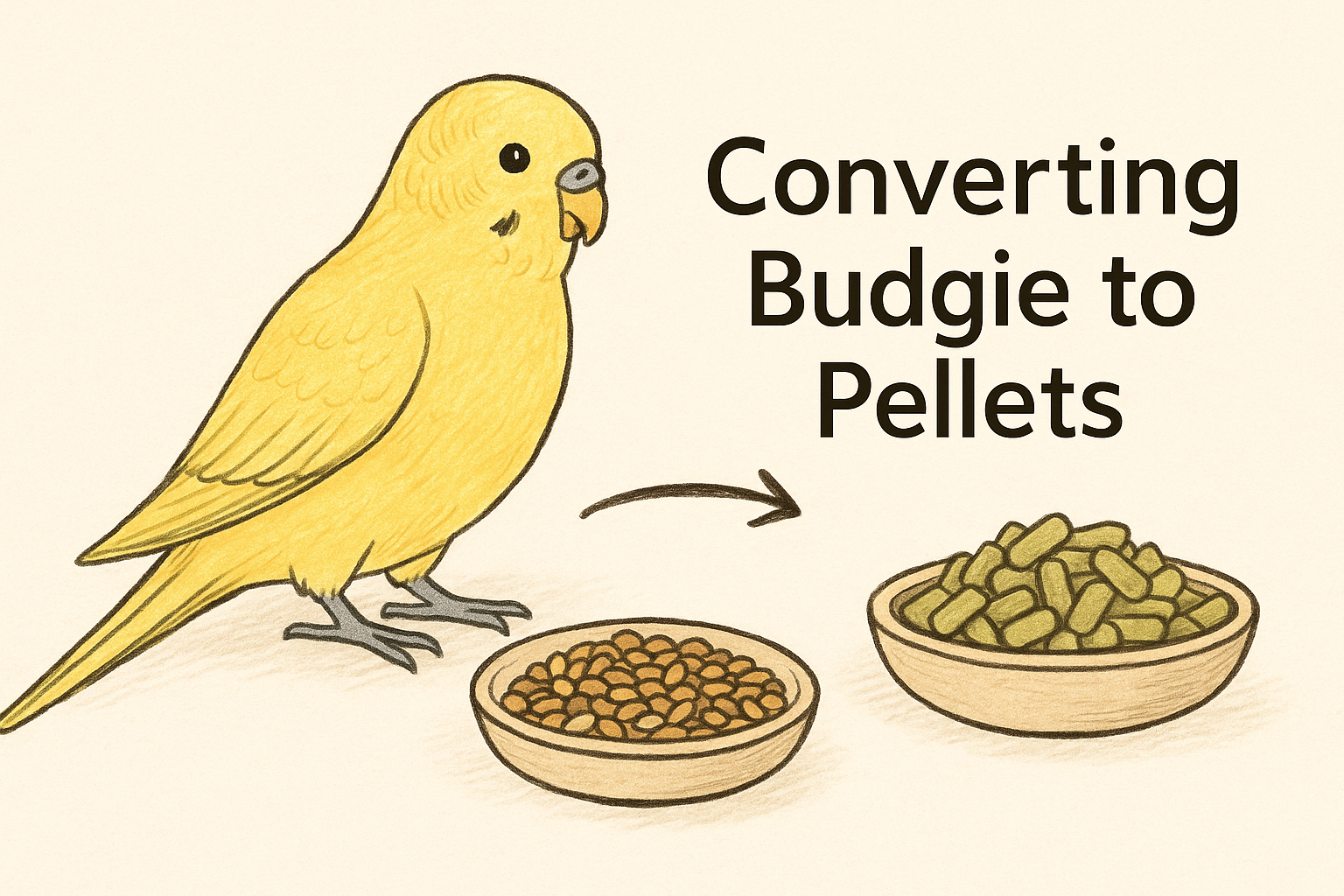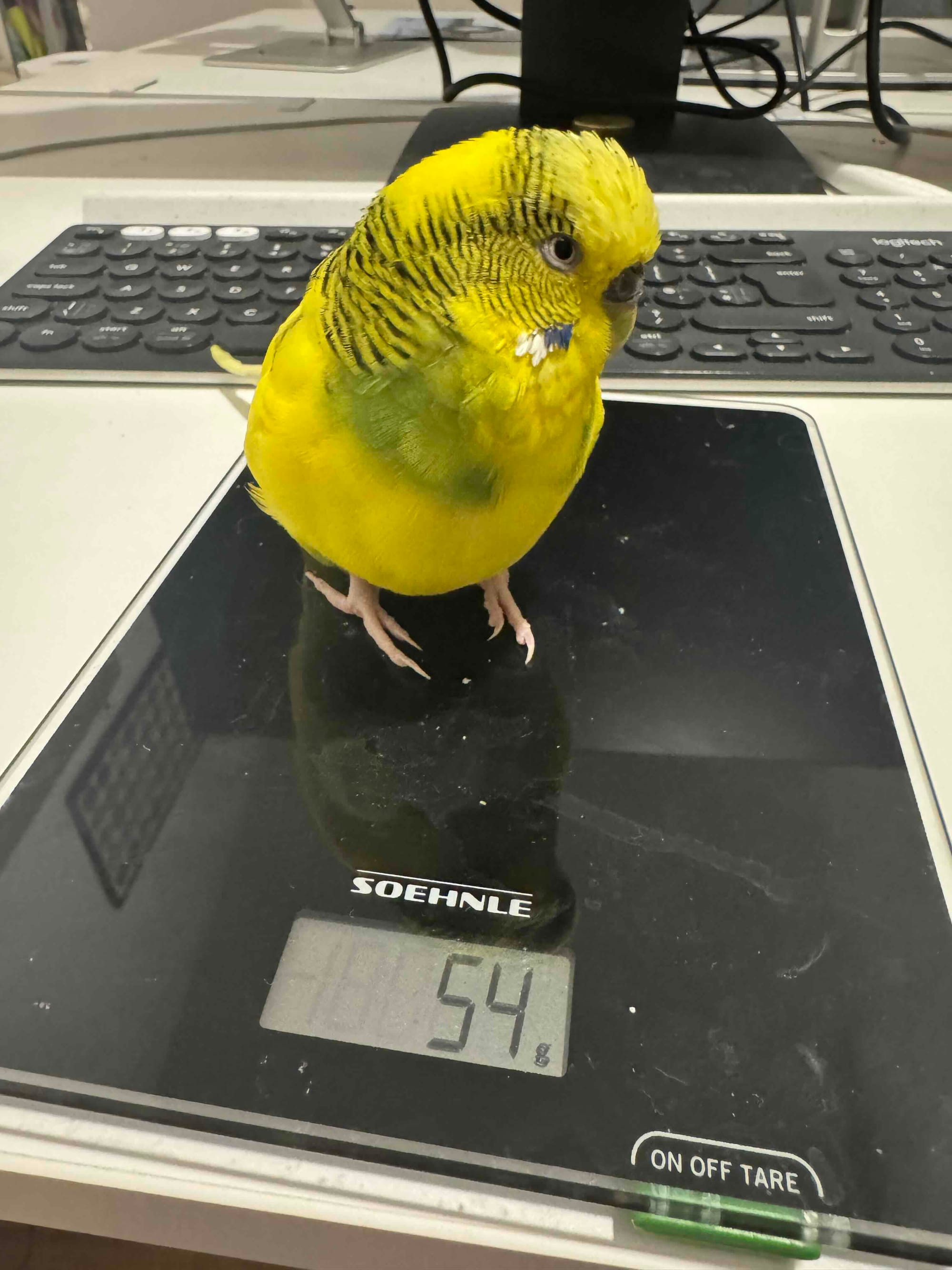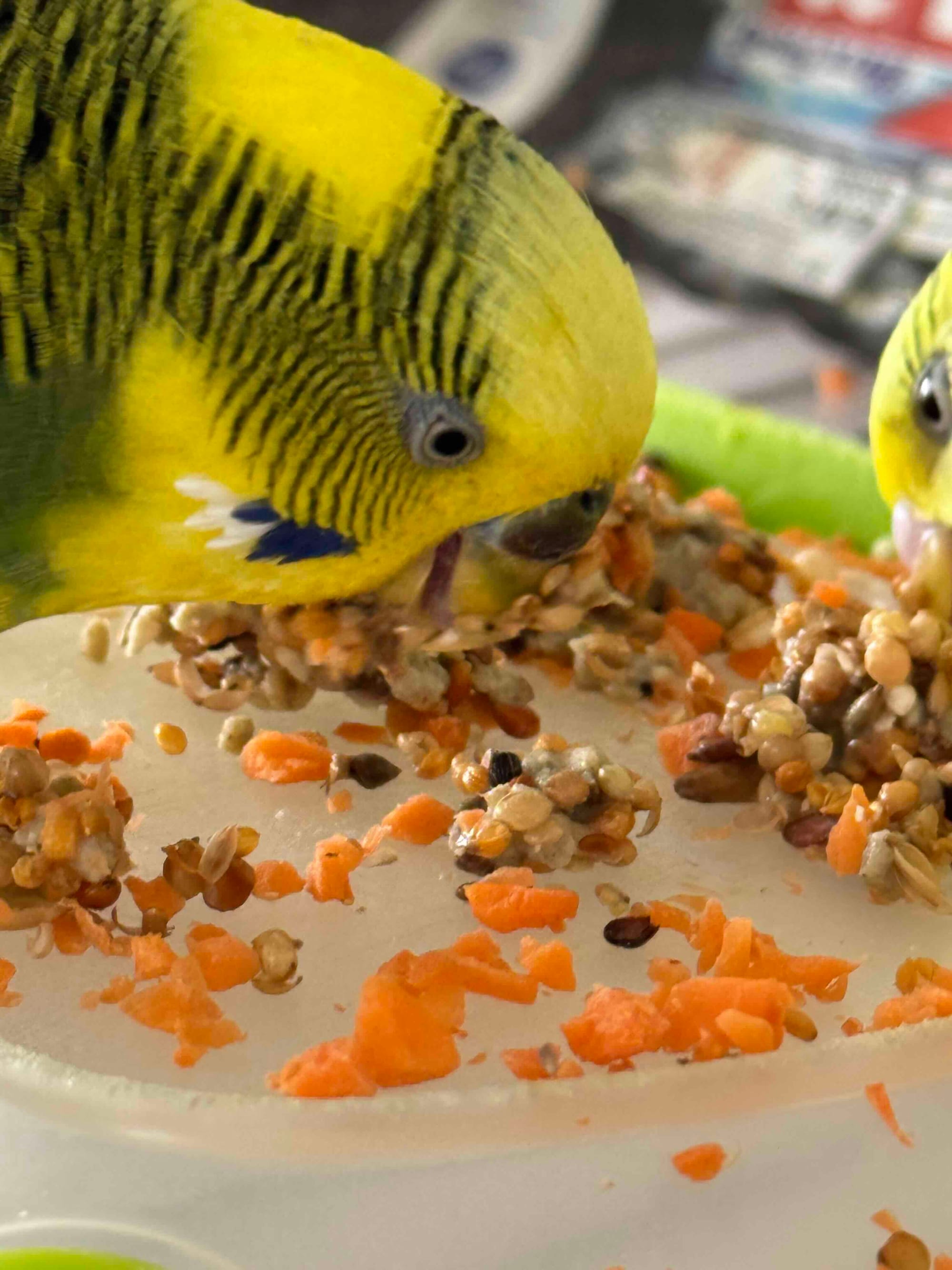Converting Budgie to Pellets: Step-by-Step Guide for a Healthier Diet

Switching a budgie from seeds to pellets can feel overwhelming, but it’s one of the most important steps you can take for your bird’s long-term health. Not all pellets are created equally—some brands are loaded with sugar and artificial ingredients that can actually harm your bird more than help. That’s why choosing the right pellet, monitoring your budgie carefully, and having a step-by-step plan are critical.
In my case, I successfully converted my own budgie using Harrison’s Super Fine Pellets, a trusted brand designed specifically with avian health in mind. Unlike cheaper pellets, Harrison’s are formulated without excess sugars and provide balanced nutrition in every bite.
Step 1: Choose the Right Pellet
At first glance, all pellets may look the same—but the differences are huge. Some pellets are packed with added sugar, artificial colors, or cheap fillers. These can make the food taste sweet, which birds love, but over time they can actually be worse than seeds, leading to obesity, liver problems, and nutritional gaps.
This is why paying a premium for a high-quality pellet like Harrison’s is worth it. Premium pellets use organic, whole ingredients, avoid unnecessary sugars, and undergo stricter quality control to ensure that every bite is nutritionally balanced. The higher cost reflects better ingredients and safer processing, not marketing gimmicks.
By contrast, some well-known brands like Zupreem Fruit Blend and other colorful flavored pellets are often criticized for high sugar and artificial additives. They may seem attractive because birds eat them eagerly, but the sugar load makes them less healthy than seeds in the long run.
Choosing a trusted, premium pellet means you’re not just feeding your budgie—you’re investing in their long-term health and quality of life. In my case, I used Harrison’s, and based on my experience I would recommend this brand to anyone serious about their bird’s nutrition.
To ensure the quality of the pellets, it’s crucial to follow the storage instructions of the brand you choose. For Harrison’s, that means always keeping the food in its original foil-lined bag, which blocks oxygen and light better than plastic. Store it in a cool, dry place away from heat or humidity, squeeze out excess air after each use, and reseal the bag tightly. For added freshness, you can refrigerate or freeze the sealed bag. Mark the opening date, use the contents within eight weeks, and purchase only from authorized resellers to guarantee freshness and safety.
Step 2: Be Ready to Monitor Constantly

Switching to pellets is not only about choosing the right food—it’s about keeping a close eye on your budgie throughout the process. The safest time to begin is when you can spend more hours with your bird, such as during holidays or vacation days. This way, you’ll notice changes quickly and can respond before small issues become serious.
Key things to monitor:
- Daily weight checks: Use a gram scale every morning before feeding. For budgies, losing more than 3 grams (around 10% of body weight) is considered dangerous.
- Droppings: Expect a normal shift to lighter green or brown. But watery, very loose, or dark green/yellow droppings are red flags—pause the conversion and contact a vet.
- Behavior: If your bird looks puffed-up, listless, unusually cold, or avoids play, stop the transition and seek veterinary advice.
And one golden rule: never starve a bird into eating pellets. Conversion should be a gradual, gentle process built on patience, consistency, and careful observation.
Step 3: Initial Stages of the switch
Budgie Eating Pellet and Seeds
In the beginning, the goal is simply to help your budgie get familiar with the new taste and texture of pellets. Always keep pellets accessible throughout the day so the bird can explore them at its own pace.
During selected times—morning and evening work best—offer a 1:1 mixture of pellets and seeds. Add a little water to soften the pellets and mash them together with the seeds. Since the softened pellets stick to the seeds, it’s likely that your budgie will taste them while feeding on the seeds. This increases the chances of your bird becoming familiar with the new flavor and texture.
Keep this routine for up to seven days. The key is consistency and exposure, not forcing a full switch. During this stage, make sure your budgie still receives its minimum daily seed requirement so that nutrition is not compromised.
After about 30 minutes, remove any unfinished food. Softened pellets can spoil quickly, and leaving them longer encourages bacterial growth that may harm your bird.
It’s also important that fresh greens and vegetables are available throughout the day. They support nutrition and encourage foraging behavior. In my case, I even mixed in finely shredded vegetables with the seed–pellet mash to make the new diet more appealing.
At this stage, it’s best to use Harrison’s High Potency Super Fine. This formula contains more calories and nutrients, which is important because it’s expected that your budgie may eat less overall during the transition. The higher energy density helps prevent weight loss while your bird is still adjusting to the new diet.
Step 4: Gradually Increasing Pellets

In the second week, begin shifting the balance by offering a 1 seeds : 3 pellets ratio. This means pellets now make up a larger portion of your budgie’s diet while seeds are slowly reduced.
At this stage, careful weight monitoring becomes even more critical. With less seed available, your budgie must start eating pellets to meet its nutritional needs. If the bird refuses pellets entirely, there’s a risk it won’t get enough energy to maintain a healthy weight.
Weigh your budgie daily with a gram scale and watch for any rapid drops. If weight falls too quickly or your budgie shows signs of weakness, pause the transition and consult an avian vet before continuing.
As always, remove uneaten, moistened food after about 30 minutes to prevent bacterial growth. The same rules apply here as in the first week: pellets should remain accessible all day, and fresh vegetables should also be available to support nutrition and encourage foraging.
Step 5: Cold Turkey Transition
Cold Turkey Transition
After about 14 days, it’s time to remove seeds entirely. At this stage, your budgie should already be familiar with the taste and texture of pellets and more willing to accept them as the main diet. Going cold turkey means offering only pellets, supported by fresh vegetables, as the core nutrition.
The first few days of this step are critical. Closely monitor whether your budgie is actually eating the pellets—watch droppings, weight, and behavior. A healthy budgie that is adjusting will maintain normal activity and steady weight.
If your bird refuses pellets completely and weight begins to drop, don’t push the process further. Instead, research and avian experts recommend:
- Restarting with a gradual method (return briefly to a pellet–seed mix, then retry the switch).
- Trying different pellet textures (super fine, crumbles, or mixing with moistened vegetables) to see what your budgie prefers.
- Consulting an avian vet for personalized advice and possibly using high-potency pellets during the transition period.
The goal of this step is not to starve your bird into compliance but to establish pellets as the primary, long-term diet. With persistence, monitoring, and the right adjustments, most budgies will make the full switch successfully.
Step 6: Long-Term Maintenance
Once your budgie is fully converted to pellets, the focus shifts to maintaining a healthy, balanced diet over the long term. At this stage, fresh vegetables remain the top priority and should form the bulk of daily nutrition. Pellets provide a reliable foundation, but vegetables supply variety, enrichment, and important micronutrients that keep your bird active and thriving.
If you began with Harrison’s High Potency Super Fine to support the transition, this is the time to switch to Harrison’s Adult Lifetime Super Fine. The Adult Lifetime formula is designed for stable, ongoing nutrition once your bird has adjusted to pellets and no longer needs the extra energy from the high potency blend.
Keep monitoring weight weekly, continue offering a variety of safe vegetables, and schedule regular check-ins with an avian vet to ensure your budgie’s diet remains balanced. With the right combination of pellets, vegetables, and attentive care, your budgie can enjoy a long, healthy life.
